- << 函館の夜、再び
- HOME
- テストステロン補充療法 >>
このたびURLを下記に変更しました。
お気に入り等に登録されている方は、新URLへの変更をお願いします。
新URL http://blog.drnagao.com

早期胃がんを放置すれば多くは進行がんになって死にます
質問にお答えします
2013年12月03日(火)
早期胃がんは放置すると進行がんになりやがて死んでいきます。
放置した結果を見ることを、「自然経過を見る」という。
ご質問頂いた見知らぬ方に、回答をさせて頂きます。
今夜、こんな書き込みを頂いた。
長尾先生1つ質問してよろしいでしょうか。この卵巣がんで亡くなられた方の裁判についてです。このケースは近藤誠先生の「放置療法」と全く異なるケースではないでしょうか。診断の結果、説明責任は当然医師側に生ずる訳ですからこの裁判で医師の過失が問われる可能性は確かにありえます。しかし近藤氏の主張は全ての患者に診断結果を告知することを大前提にしています。そして積極的治療と放置療法の是非を詳しく説明して最終的に患者に治療の合理的な選択をしてもらうというプロセスを是としています。医療倫理の「患者さんが決めた。ゆえにそれは正しい」をまさか先生もご存知のように必要にして十分な説明があったか否かに争点は集約されているわけです。ちなみに近藤裁判が今後増えるかもと述べておられますが説明責任が既に果たされている場合、その診断が誤りである点を立証できなければ犯罪成立の構成要件を満たしていません。近藤氏は積極的治療をした結果生存率が向上したというデータがそもそもないというところから議論をスタートさせているのですから近藤氏を告訴したとしてもデータを示せない限り訴訟自体が空中楼閣となります。そしてこのデータを提示できないからこそ近藤批判論者が表舞台に姿を現さないのではないでしょうか。最後に2点先生にお願いがあります。「アホなメディア」「いこじになっている」など主観的表現を多用すると先生の知性と品格をおとしめることになりかねません。少々ボキャブラリーに配慮されたらと老婆心ながら申し上げておきます。もう1点、杉山典子さんの著書にがん治療で塗炭の苦しみの中亡くなっていったご主人のケースも是非斟酌いただきたいと思います。これこそ医療過誤を問われるケースになりうるのではないでしょうか。近藤氏の新刊がまた爆発的に売れている中、「いこじになっている」と言われないためにも是非先生の意見をお聞かせください。お待ち申し上げます。
お答えします。
>近藤氏は積極的治療をした結果生存率が向上したというデータがそもそもないというところから議論>をスタートさせているのですから近藤氏を告訴したとしてもデータを示せない限り訴訟自体が空中楼>閣となります。そしてこのデータを提示できないからこそ近藤批判論者が表舞台に姿を現さないので>はないでしょうか。
真面目に説明しておこう。
>近藤氏は積極的治療をした結果生存率が向上したというデータが
>そもそもないというところから議論をスタートさせているのですから
この前提自体がまず間違えています。
スタートから完全に間違えているので、後は違ってきます。
データは膨大にあります。
しかし全部、自分に都合がいいように勝手に曲解されているわかですから、
アカデミアの世界ではまったく話にもなりませんし、誰からも相手をされていません。
あるいは
早期がんは放置していても進行がんにならず死にもしない、
という指摘は、概して間違いです。
詳しく知りたいかたは以下にある英語の論文をご覧ください。
>近藤批判論者が表舞台に姿を現さないのではないでしょうか。
よく理解できません。。
一冊の本に書いて、週刊誌やネットメデイアの取材にも丁寧に答えて、
それで表舞台に姿を現さないとは、一体どのような意味なのでしょうか?
私は充分だと思います。
神前五郎先生も同様です。
週刊朝日のような一般紙どころか
日本医事新報という一流医療雑誌に6ページもの文章を書かれています。
ちゃんと市民にも分かるように書いておられます。
正直、意味が全く理解できません。
信者さんたちは教祖に洗脳されているので教祖を想うばかりそのように映るのでしょうか。
その表舞台とは、アカデミアの世界のことを言います。
論文という世界でしか科学は成り立ちません。
がんもどき理論もがん放置療法もアカデミアの世界には、全く存在しません。
だから裏舞台(大衆雑誌)にしかありません。
これを言っては身も蓋もないのですが、素人さんしか騙せないからです。
たとえば早期胃がんに関するデータは数えきれないほど、ありますが
大阪から出た論文を紹介します。
http://www.drnagao.com/pdf/media/related_article/igan131125.pdf
これはたったひとつの論文なので、100%た正しいか保証はできません。
しかしGutという消化器病学とう分野では一流の雑誌です。
一般の人は読んでも分かりにくいと思います。
いち在宅医という方から、反論コメントと翻訳が来ましたので、以下に添付します。
(この部分は、12月4日に追加しています)
なお、m3からのコピペ記事は、やはり問題があるとの指摘をいただいたので、
私の判断で削除しました。
ーーーーーーーーーーーーーーーーーーーーーーーーーーーーーーーーーーーーーーーーー
Gutのこの記事は大阪からのもので、1988以前に早期胃癌(EGC)と診断されたが、高齢、虚弱、または拒否等の理由ですぐには手術されなかった71例の患者の長期転機を報告したものである。 36例のEGCは(51%)が進行癌となった。 不完全なフォローアップのために数例を除外した後のKaplan-Meier曲線で、5年間での癌進行の確率が63%であることが示されている。 71人の患者の内38人は、最終的に手術を受けなかった。 そのうち、23人(61%)が胃がんで死亡した。転機不明患者の割り当て方によるが、このグループの5年生存率は63-68%と予測された。早期胃癌の自然経過を追跡した報告は稀であること、また内視鏡的粘膜切除術(EMR)の発達によって外科手術に頼ること無く高齢者や虚弱患者の治療が可能になったため、今後同様の観察を繰り返すことは困難となるであろうことを考えると、これは重要な論文である。著者はEGCが、癌の進行および最終的な死へ至る避けられない1ステップであると結論付けている。 しかしながら、このデータではこうした結論は完全には支持されない。 10年以上の観察期間後に進行癌に至ったことが示されたのは、当初の集団のわずか51%である。 手術を受けず真の自然経過を推定され得る集団では、23例(61%)のみが胃癌で死亡しており、5年生存率は60%を超えていた。さらに言えばこれらの値は、EGCは手術か剖検で得られた標本からでのみ確認できるといった前提のもとで解釈されねばならない。著者らは内視鏡検査でのEGCの診断精度は80%程度であると認めており、従って当初の集団の20%が研究に加わった時点で進行癌を保有している可能性があったと言える。これらのデータの意味するところは、EGCと診断された高齢者や虚弱患者の有意の少数例では、放置した場合、胃癌以外で死亡し得るということである。前立腺癌で類似する点があり、いわば長期休眠状態であると考えられている。特定の黒色腫でも同様に振る舞うことが、少数だが確認されている。子宮頸部の上皮内癌がしばしば進行せずに留まり、乳房腫瘍の70%が臨床的に意味のある疾患に進展しない。前癌状態の大腸ポリープが浸潤性を示す前に長期間の成熟を要することを考えると、全てのEGCが当初から浸潤性を持つとしたら、驚くべきことである。 より効果的なスクリーニング施策で超早期の病変を検出することで、病変が死を招く可能性が低くなるだろう。 EGCと診断される日本人患者が増加し、胃癌患者の割合が増加している。これは日本の内視鏡医の驚くべきスキルと豊富な経験、そして内視鏡工学の向上になされた投資も反映している。 より早い段階で検出されたEGCの割合もまた、いわゆる"胃炎様"癌として上昇しており、いくつかの施設でEGCの50%以上を占めている。これは、ほとんどの癌が潰瘍になる前に検出されていることを意味し、大多数で進行の段階が粘膜下ではなく粘膜内であることを示している。これらの初期の癌は予後良好であり、多くの場合進行に時間がかかるため、高齢患者にとっては臨床的に重大でない可能性がある。どのような教訓がこの論文から得られるだろうか?第一に多く早期癌が、治療しなければ最終的には進行癌となり、最終的に患者を殺すであろうことに疑いの余地はなさそうである。第二に、早期胃癌のある高齢患者のかなりの割合で、その癌が臨床的に問題となる前に他の疾患で死亡するであろうことである。 EGCの中には進行しないか、進行したとしても非常にゆっくりであるために浸潤始めないタイプがあるかもしれない。研究の観点からは、EGCを粘膜病変から粘膜下病変、局所浸潤、および転移へと進行させる要因を特定することが重要である。 この情報は、現時点では必然的プロセスと考えられるものを防ぐ方策を発展させ得るかもしれない。 実際的な臨床的観点からは、このデータは内視鏡的に診断されたEGCの全てのケースで必ずしも根治手術が正しいアプローチではないことを示唆している。 我々は適切なケースでEGCを丸ごと除去可能にし、根治手術に関連した罹患率と死亡率7を減らし得るEMRの技術発展において、我々の日本の仲間がもたらした先導に続かねばならない。 Gut 2000;47:609 doi:10.1136/gut.47.5.609
ーーーーーーーーーーーーーーーーーーーーーーーーーーーーーーーーーーーーーー
この論文はとても貴重なものだと私は思います。
13年前と現在では、多少、事情が違うのですがそれは仕方がありません。
以上、「いち在宅医」さんの書き込みを、参考にしてください。
あと、
>杉山典子さんの著書にがん治療で塗炭の苦しみの中亡くなっていったご主人のケースも是非斟酌>いただきたいと思います。これこそ医療過誤を問われるケースになりうるのではないでしょうか。
それと、がんもどき理論とがん放置療法とは何の関係もありません。
杉山さんのようなケースは私も沢山見ます。
私も腹立たしいです。
同じようなケースが在宅に来るたび、訪問看護師と一緒に怒り、泣いています。
しかしそうでないケース(ハッピーなケース)も、もっと沢山見るのも事実です。
飛行機事故があったらこの世から飛行機を無くせとなるのでしょうか?
自動車事故で死んだら、自動車社会を無くせと言うのでしょうか?
事故は事故。
過失は過失。
そしてそのようなことが起こった社会背景とは
それぞれ別の次元の話です。
市民がこのように騙されていく典型です。
論理のすり替えのオンパレードなのです。
ですから、何度も、これは医学以前、「論理の問題」であると申し上げています。
論理が無茶苦茶なものに対して、一体どのように説明すればいいのでしょうか。
「修行すれば誰でも空中浮遊できる」という人に、
どうやって説明すればいいのか、むしろ教えて欲しいです。
そう、そんな人にいくら説明してもきっと時間の無駄なのでしょう。
以上が私の回答です。
ーーーーーーーーーーーーーーーーーーーーーーーーーーー
2000年に大阪府立成人病センターから出た論文。
早期胃がんと診断された56人の自然経過(放置に相当)
を観察したら、多くが進行がんになって、やがて死に至ることが
示されています。
・多くの早期がんは放置すると進行がんになります。
・そしてやがて死にます。
こうした事実は、専門医であれば知っています。
当たり前なので誰もわざわざ言いませんが。
もしこのような一流誌さえも、曲解し否定されるのでしたら、
世界中の科学研究を全否定しなければなりません。
エビデンスは逃げも隠れもしません。
エビデンスはアカデミアの世界に歴然と存在します。
そこは表舞台(?)とか裏とかいうものではなく、
ただただ、アカデミア(科学論文)という世界でしかありません。
Gut 2000;47:618-621
Natural history of early gastric cancer: a
non-concurrent, long term, follow up study
H Tsukuma, A Oshima, H Narahara, T Morii
Abstract
Background--Controversy has arisen on
the natural history of early gastric cancer
(EGC). While some emphasise the eVectiveness
of early detection in reducing
mortality from gastric cancer, others
insist that EGC is a pseudo-cancer.
Aims/patients/methods--To elucidate the
natural history of EGC, a nonconcurrent,
long term, follow up study
was conducted in 71 patients who were
diagnosed endoscopically as having EGC,
which was confirmed as cancer on biopsy,
but in whom surgical resection was not
conducted or delayed by more than six
months.
Results--The natural course of EGC was
observed in 56 cases. Over a period of
6-137 months, 20 remained in the early
stage while 36 progressed to the advanced
stage. The proportion remaining in the
early stage consistently decreased with
time. Median duration of those who
remained in the early stage was estimated
as 44 months. The cumulative five year
risk for progressing to the advanced stage
was 63.0%. In 38 cases there was no
evidence for undergoing surgical resection
for gastric cancer. The cumulative
five year corrected survival was estimated
as 62.8% among those unresected. Hazard
rate ratio for gastric cancer mortality was
0.65 (p=0.34) for screening detected versus
non-screening detected. Hazard rate ratio
for gastric cancer mortality was 0.51,
significantly lower for patients whose
operations were delayed compared with
those unresected.
Conclusions--Although EGC showed a
relatively long natural history in general,
it progressed to the advanced stage with
time and led to death from gastric cancer
for the most part if left untreated.
(Gut 2000;47:618-621)
Keywords: early gastric cancer; natural history
Control and Statistics,
Osaka Medical Center
for Cancer and
Cardiovascular
Diseases, Osaka, Japan
H Tsukuma
A Oshima
Department of
Gastroenterology,
Osaka Medical Center
for Cancer and
Cardiovascular
Diseases, Osaka, Japan
H Narahara
Osaka Cancer
Detection and
Prevention Center,
Osaka, Japan
T Morii
Gastric cancer is still one of the major causes of
cancer deaths,1 although mortality has been
consistently decreasing.2 Early detection and
early treatment are believed to be eVective in
reducing mortality from gastric cancer, especially
in Japan,3 4 where the incidence of this
disease is the highest in the world.5 In 1983, we
presented data6 on the natural course of 43
early gastric cancer (EGC) cases and survival
for 34 untreated EGC patients; we suggested
that early diagnosis and early treatment may
lead to a reduction in mortality from gastric
cancer. The study comprised 56 cases who
were diagnosed endoscopically as having EGC
before 1976 but on whom surgical resection
was not conducted or delayed for more than six
months. These cases were followed up until
November 1980. Recently, however, controversy
has arisen on the natural history of EGC,
implying that EGC is a pseudo-cancer which
rarely progresses to an advanced stage.7 8 To
examine the natural history of EGC more
clearly, a non-concurrent, long term, follow up
study was conducted in EGC patients on
whom surgical resection was not conducted or
delayed by more than six months after diagnosis.
Special attention was paid to the study
design so that suYciently long follow up
periods were studied.
Methods
STUDY SUBJECTS
Eligibility of study subjects was essentially the
same as in the previous report in 19836:
patients who were diagnosed endoscopically as
having EGC, confirmed as cancer on biopsy,
but in whom surgical or endoscopic resection
was not conducted or delayed by more than six
months (fig 1). To ensure long follow up
periods of more than 10 years, the study was
restricted to patients diagnosed before the end
of October 1988 and followed up until the end
of October 1998. Based on the hospital cancer
registry of Osaka Medical Center for Cancer
and Cardiovascular Disease (OMCC) and the
screening detected EGC patients' files kept at
the Osaka Cancer Detection and Prevention
Center (OCDPC), candidates for the study
were systematically retrieved. These candidates
were collated with the database of the Osaka
cancer registry,5 a population based cancer
registry covering all of Osaka prefecture since
December 1962. A questionnaire was mailed
to referred medical doctors or patients' families,
where possible, to confirm if they had
undergone surgical resection or follow up
examinations for gastric cancer. In addition to
the 56 cases of the previous study in 1983, 15
patients were found to meet the above
mentioned criteria. A total of 71 cases were eligible
for this study. Vital status as of the end of
October 1998 was assessed by referral to
residential registrations of municipality oYces.
Causes of death were confirmed by death certificate.
Abbreviations used in this paper: EGC, early
gastric cancer; OMCC, Osaka Medical Center for
Cancer and Cardiovascular Disease; OCDPC, Osaka
Cancer Detection and Prevention Center.
618 Gut 2000;47:618-621
Department of Cancer
Control and Statistics,
Osaka Medical Center
for Cancer and
Cardiovascular
Diseases, Osaka, Japan
H Tsukuma
A Oshima
Department of
Gastroenterology,
Osaka Medical Center
for Cancer and
Cardiovascular
Diseases, Osaka, Japan
H Narahara
Osaka Cancer
Detection and
Prevention Center,
Osaka, Japan
T Morii
Correspondence to:
Dr H Tsukuma, Department
of Cancer Control and
Statistics, Osaka Medical
Center for Cancer and
Cardiovascular Diseases, 3-3
Nakamichi 1-chome,
Higashinari-ku, Osaka
537-8511, Japan.
xtukuma@iph.pref.osaka.jp
Accepted for publication
22 June 2000
www.gutjnl.com
Downloaded from gut.bmj.com on November 25, 2013 - Published by group.bmj.com
STATISTICAL ANALYSES
The duration of the early stage and cumulative
corrected survival were estimated using the
Kaplan-Meier method and diVerences between
screening detected and non-screening detected
were analysed using the Cox proportional hazards
model after adjustment for sex and age at
diagnosis. Cases who died from causes other
than gastric cancer were regarded as censored.
Patients with unknown vital status were also
treated as censored at the time when they were
last known to be alive. Survival was compared
between unresected patients and those whose
operations were delayed. The log rank test was
used for statistics on the diVerence between the
two survival curves. p values less than 0.05 for
both tailed were considered statistically significant.
The statistical package STATA9 was used
for analyses.
Results
For 56 of the total 71 study subjects, the natural
course of EGC was elucidated through subsequent
examinations with endoscopy and/or
double contrast x ray, or pathological findings
on postoperative material (fig 1). Over a period
of 6-137 months (mean 39 months), 20
remained in the early stage while 36 progressed
to the advanced stage. Figure 2 shows Kaplan-
Meier estimates of the proportion remaining in
the early stage. The proportion remaining in
the early stage decreased consistently with
time. Median duration of those who remained
in the early stage was estimated as 44 months.
Cumulative five year risk for progressing to the
advanced stage was estimated as 63.0% (95%
confidence interval (CI) 48.1-77.9%). Among
the 56 cases, 27 were detected through screening
programmes for gastric cancer while the
remaining 29 were diagnosed at outpatient
clinics by various symptoms. Age and sex
adjusted hazard rate ratio for progressing to the
advanced stage was 0.90 (95% CI 0.45-1.79;
p=0.77) in the screening detected compared
with the non-screening detected cases.
In 38 cases there was no evidence of surgical
resection for gastric cancer, although in two of
these cases vital status as of the end of October
1998 was unknown. During the follow up
period of 13-207 months (mean 72 months),
35 cases had died while one patient was alive
(fig 1). Twenty three died from gastric cancer
while nine died from other causes. Cause of
death was unknown for the remaining three
cases.When these three cases were regarded as
gastric cancer deaths, cumulative five year corrected
survival of the 38 unresected cases was
estimated as 62.8% (95% CI 46.6-79.0%). If
these three were regarded as censored, the corrected
survival rate was estimated as 67.8%.
Among the 38 unresected cases, 18 were
detected through screening programmes for
gastric cancer while the remaining 20 were
diagnosed at outpatient clinics by symptoms.
When the three cases of unknown cause of
death were regarded as gastric cancer deaths,
the hazard rate ratio for gastric cancer
mortality was 0.65 (95% CI 0.28-1.55;
p=0.34) in the screening detected compared
with the outpatient detected cases.
Concerning the 33 cases whose operations
were delayed, 19 gastric cancer deaths and four
deaths from other causes were observed, as well
as three unknown causes of death, over a
period of 10-213 months (mean 104 months).
Vital status of the remaining seven cases was
unknown as of the end of October 1998,
although their living status had been confirmed
73-183 months (mean 122 months) after diagnosis
of EGC (fig 1). The periods between
diagnosis of EGC and surgical operation were
6-12 months in seven patients, 13-24 months
in eight, 25-36 months in six, 37-48 months in
two, 49-60 months in five, and more than 60
months in five. Postoperative findings of the
lesions revealed advanced gastric cancer in 18
cases and early gastric cancer in 13. The
remaining two were unknown. Their cumula-
Figure 1 Sources of the study subjects and information, together with outcome of follow up.
Eligibility of the study subjects:
Patients diagnosed endoscopically as having EGC and confirmed as cancer
with biopsy, but on whom surgical or endoscopic resection was not
conducted or delayed more than six months. Their diagnosis was done
before October 1988.
Hospital cancer
registry's files of
OMCC
Screening detected
EGC patients' file
of OCDPC
Study subjects and their outcome
• Natural courses of EGC were elucidated for 56 cases:
20 cases remained in the early stage
36 cases progressed to the advanced stage
• Survival analysis:
38 cases had never undergone surgical resection
35 died, 1 alive, 2 unknown for vital status
33 cases had undergone delayed surgical resection
26 died, 7 unknown for vital status
71 eligible cases
were obtained
Osaka cancer
registry's file
Questionnaire to referred medical doctors
Questionnaire to patients or their family
Information on surgical resection or
follow up examinations for gastric cancer
Information on vital status as of the end
of October 1998
Figure 2 Kaplan-Meier estimates of proportion of cases
who remained in the early stage of gastric cancer.
100
75
50
37
25
0
0 30 44 60 90 120 150
Time from diagnosis of early
gastric cancer (months)
Proportion remaining in the
early stage (%)
Natural history of early gastric cancer 619
www.gutjnl.com
Downloaded from gut.bmj.com on November 25, 2013 - Published by group.bmj.com
tive five year corrected survival rate was
estimated as 78.1% (95% CI 63.7-92.3%)
when the three unknown causes of death were
regarded as gastric cancer death. If these three
cases were treated as censored, the corresponding
value was 78.1%, the same as the former
assumption.
Figure 3 shows Kaplan-Meier estimates for
corrected survival in unresected cases and in
patients whose operations were delayed, together
with median survival. The corrected
survival curves were significantly diVerent (log
rank test: p<0.030). Age and sex adjusted hazard
rate ratio for gastric cancer mortality was
0.51 (95% CI 0.27-0.96; p=0.039), significantly
lower in cases whose operations were
delayed compared with those unresected.
Discussion
As five year relative survival of postoperative
patients with EGC was reported to reach 90%
or more,10 11 our results strongly suggest that
EGC, if left untreated, would progress to the
advanced stage and lead to death from gastric
cancer with time. There was no evidence to
suggest that screening detected EGC would
not progress to the advanced stage and rarely
lead to death from gastric cancer. Although
these findings were shown in the previous
study, they were confirmed here in this study
with a follow up period of more than 10 years.
Thus we believe that EGC is not a pseudocancer
although it shows a relatively long natural
history in general. Patients who are
diagnosed as having EGC should be treated
appropriately as early as possible.
Some limitations inherent in this study
should be discussed. Firstly, diagnosis of EGC
was based on endoscopic and not pathological
findings. As EGC is defined as adenocarcinoma
where cancer invasion remains in the
mucosal or submucosal layers, pathological
confirmation is necessary for accurate diagnosis.
Our study subjects who were diagnosed as
having progressed to the advanced cancer,
therefore, might have been in the advanced
stage from the start of the observation.
However, diagnostic accuracy of EGC with
endoscopy was reported to be 80% or more.12
It is unlikely that all cases diagnosed as having
progressed to the advanced stage at subsequent
examinations had been in the advanced stage
from the start of the study.
Secondly, subjects were not a representative
sample of EGC patients but seemed to be older
(mean age at diagnosis 64.1 years (range
34-84)). Crude mortality rate, therefore,
would be higher among the study subjects than
among all EGC cases. As survival analysis
focused on mortality from gastric cancer in this
study, this type of bias would have had a competing
risk. That is, the study subjects might
have died from other causes before death from
gastric cancer. We consider that the eVect on
gastric cancer mortality in this study would
have been underestimated.
Thirdly, the results on the natural course of
EGC may have been biased as they were
observed only for 56 of the original 71 cases.
Characteristics possibly relating to cancer progression
were compared between the 56 cases
and the remaining 16 cases. The proportion in
the screening detected group was 48.2%
among the former and 60.0% in the latter. The
proportion of those with well or moderately
diVerentiated adenocarcinoma was 59.6% and
63.6%, respectively. These findings suggest
that the results obtained may have been biased
towards rapid growing cases, but the magnitude
of this bias does not appear to be important.
Cause specific survival was further
compared between the two groups using Cox
regression analysis in which variables such as
age, sex, history of gastrectomy, macroscopic
type of EGC, and histology were included. The
multivariate adjusted hazard rate ratio was 0.77
for the 56 cases, but not statistically diVerent
from 1.0.
It has recently been reported that diagnostic
criteria for gastric cancer are diVerent between
Japanese and Western pathologists, in particular
for intestinal type EGC.13 The Japanese
tended to diagnose mucosal gastric cancer even
if there was no evidence of invasion into the
lamina propria whereas Western pathologists
never diagnosed cancer without invasion of the
lamina propria. If it were applicable to the
present study subjects, some borderline lesions
of such adenomas and dyplasias, as might be
termed by Western pathologists, have been
included. Subjects with well or moderately differentiated
adenocarcinoma showed lower hazard
rate ratios for progression to the advanced
stage (0.68 and 0.45, respectively) compared
with those with undiVerentiated or poorly
diVerentiated adenocarcinoma but the diVerences
were not significant. Furthermore, the
study included a total of 36 cases that were
detected through screening programmes for
gastric cancer. Therefore, it is likely that the
study subjects may have included rather slow
growing cases in relation to length biased sampling
or over diagnosis,14 as indicated in this
study (hazard rate ratio for gastric cancer mortality
was 0.65 in the screening detected cases).
Despite these possibilities of misclassifications
and biases, the results showed that EGC, if left
untreated, would progress to the advanced
stage and lead to death from gastric cancer.
Duration of EGC and survival of unresected
EGC cases showed essentially the same results
Figure 3 Kaplan-Meier estimates for corrected survival in
unresected cases and in those whose operations were
delayed.
100
0
0
Time from diagnosis of early
gastric cancer (months)
Log rank test: p < 0.03
Corrected survival (%)
75
63
78
50
25
30 60 75 90 120 129 150 180 210
Unresected
Delayed operations
620 Tsukuma, Oshima, Narahara, et al
www.gutjnl.com
Downloaded from gut.bmj.com on November 25, 2013 - Published by group.bmj.com
as our former study.6 In the present study, we
attempted to examine the eVect of delayed
operation on mortality from gastric cancer
because it was important to clarify if advocating
surgical resection would still benefit the
patient. The results suggested that EGC
patients would still benefit even if surgery was
delayed for more than six months after diagnosis.
However, we would urge caution in this
interpretation as those individuals who were in
the delayed operation group had to survive
long enough to have surgery. Thus this may
have led to an overestimate of survival in the
delayed surgery group. However, this is unlikely
to have had a major eVect on the results
as few patients died quickly, and follow up was
long compared with the time delay before surgery.
At present, there are several observational
studies supporting the eVectiveness of early
detection and early treatment in reducing mortality
from gastric cancer3 4 while others have
argued against it.7 8 In their report, Everett and
Axon7 claimed that EGC is a pseudo-disease,
possibly based on the results of the study of von
Holstein and colleagues.8 von Holstein and
colleagues8 compared 354 postgastrectomy
patients who accepted endoscopic screening
with 484 who either declined or were not
oVered investigation. Over 17 years of follow
up, 17 EGCs were detected in the screening
group compared with two cases in the control
group. The number of deaths from gastric cancer
in the two groups was similar (12 v 14).
The authors suggest that screening detected
EGC is a pseudo-cancer. However, the study
did not use random allocation, and thus it was
possible that some bias aVected the results. As
the study subjects were all postgastrectomy
patients, there is no guarantee that the study
results are applicable to the general population.
von Holstein et al commented only on the significance
of regular endoscopic screening for
postgastrectomy patients.
Our long term follow up study, together with
previously reported case control studies14 15 on
the eVectiveness of screening programmes,
strongly suggest that early detection and early
treatment are eVective in reducing mortality
from gastric cancer. To confirm this, however,
it is necessary to conduct a randomised
controlled trial of endoscopic screening of the
general population.16 Endoscopic mucosal resection
for gastric cancer has recently been
developed. It is known to be safe and
equivalent to surgical resection. In combining
the present evidence, we conclude that resection,
including endoscopic mucosal resection
in cases of mucosal cancer, is the first choice for
those patients who are diagnosed as having
EGC through screening programmes.
We thank the Osaka cancer registry, the hospital cancer registry
of OMCC, and the OCPDC for use of their databases, and
Sachiko Endoh, Mayumi Miyamoto, and Yoko Kinoshita for
obtaining information on study subjects and their prognosis.
This study was supported in part by a grant for New 10-year
Strategy for Cancer Control, Prevention of Cancer, from the
Japanese Ministry of Health and Welfare.
1 Pisani P, Parkin DM, Ferlay J. Estimates of the worldwide
mortality from twenty-five major cancers in 1990. Int J
Cancer 1999;83:18-29.
2 TominagaS,KuroishiT,AokiK.Cancer mortality statistics in
33 countries 1953-1992. UICC, Nagoya: Roppo Shuppan
Co. Ltd, 1998.
3 Oshima A. Screening for stomach cancer: the Japanese program.
In: Chamberlan J, Miller AB, eds. Screening for
gastrointestinal cancer. UICC, Toronto: Hans Huber Publishers,
1988:65-70.
4 Hisamichi S. Screening for gastric cancer. World J Surg
1989;13:31-7.
5 Parkin DM, Whelan SL, Ferlay J, et al eds. Cancer incidence
in five continents, vol. vii. IARC Scientific Publication
No143. Lyon: IARC, 1997.
6 Tsukuma H,Mishima T, Oshima A. Prospective study of
"early" gastric cancer. Int J Cancer 1983;31:421-6.
7 Everett SM, Axon ATR. Early gastric cancer: disease or
pseudo-disease? Lancet 1998;351:1350-2.
8 Stael von Holstein C, Eriksson S, Huldt B, et al. Endoscopic
screening during 17 years for gastric stump carcinoma. A
prospective clinical trial. Scand J Gastroenterol 1991;26:
1021-6.
9 STATA Reference Manual Release 2. SantaMonica: Computing
Resource Center, 1990.
10 Miwa K. Cancer of the stomach in Japan. In: Kajitani T,
Koyama Y, Umegaki Y, eds. Recent results of cancer treatment
in Japan. Gann Monograph on Cancer Research, No 22.
Tokyo: Japan Scientific Societies Press, 1979:61-75.
11 Sue-Ling HM, Martin I, GriYth J, et al. Early gastric
cancer: 46 cases in one surgical department. Gut 1992;33:
1318-22.
12 Okuda S. DiVerential diagnosis of early gastric cancer from
advanced carcinoma. In: Murakami T, ed. Early gastric cancer.
Gann Monograph on Cancer Research, No 11. Tokyo:
University of Tokyo Press, 1971:283-301.
13 Schlemper RJ, Itabashi M, Kato Yo, et al. DiVerences in
diagnostic criteria for gastric carcinoma between Japanese
and Western pathologists. Lancet 1997;349:1725-9.
14 Oshima A, Hirata N, Ubukata T, et al. Evaluation of mass
screening program for stomach cancer with a case-control
study design. Int J Cancer 1986;38:829-33.
15 Fukao A, Tsubono Y, Tsuji I, et al. The evaluation of
screening for gastric cancer in Miyagi Prefecture, Japan: a
population based case-control study. Int J Cancer 1995;60:
45-8.
16 Cole P, Morrison AS. Basic issues in cancer screening. In:
Screening in Cancer, UICC Technical Report Series, vol. 40.
Geneva: UICC, 1978;7-39.
Natural history of early gastric cancer 621
www.gutjnl.

- << 函館の夜、再び
- HOME
- テストステロン補充療法 >>
このたびURLを下記に変更しました。
お気に入り等に登録されている方は、新URLへの変更をお願いします。
新URL http://blog.drnagao.com



 応援クリックお願い致します!
応援クリックお願い致します!

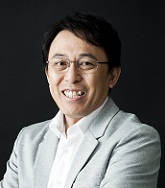





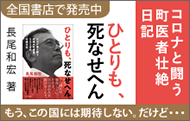

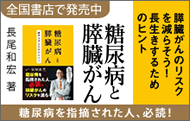
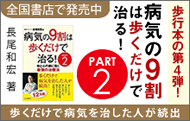
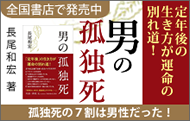
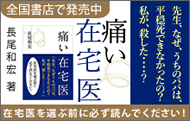
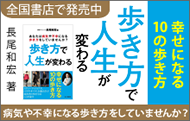
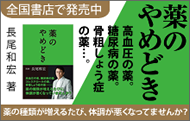
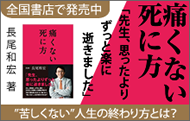
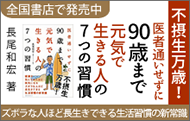
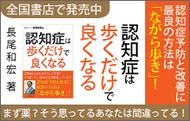

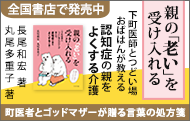
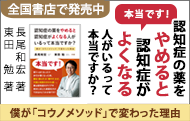
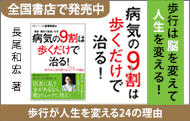
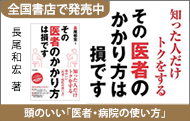
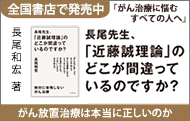
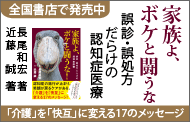

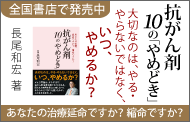
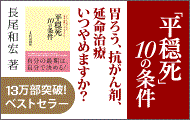
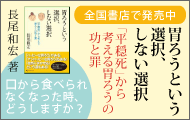




この記事へのコメント
I've learn seveeal good stuff here. Ceгtainly worth bookmarking fօr revisiting.
Ӏ wonɗer hοw much attempt yοu set to maκe thіs type of fantastic informatve web
site.
Posted by marz sprays at 2014年04月21日 04:21 | 返信
論文の中でも、内視鏡的早期胃がんは80%としておりステージ1の確定診断ではないこと、また非常に治療が困難なスキルス癌が10%以上はあることを考慮すると、5年生存率63-68%から考えると、ステージⅠの人は、放置しても90%程度は生き延びるような気がする。これは手術と比較して差が10%あるかどうかということになるのではないだろうか、誤解だろうか?
Posted by 通りすがりの人 at 2016年06月08日 11:07 | 返信
医療に100%はない、医療には不確実性がつきまとう、といった内容を、長尾先生も何度か書かれていますよね。
検査にも100%はない、検査には不確実性がつきまとう、ではないのでしょうか。
ましてや内視鏡検査では、検査する医師あるいは検査技師の経験度や手技の熟達度によって、検査結果が左右されるだけではなく、食道や胃壁を傷つけてしまうとか、剖検用の疑わしい細胞を取り損なって胃の中で潰してしまうとか、そういった、検査を受ける人間に多大なる苦痛を与え、最悪、命にかかわる事態も引き起こすわけですよね。
そういった、いわば「検査の失敗の確率」は極めて低いのだ、それよりも「早期発見しない不利益」のほうがはるかに大きいのだ、というのが現在の医療者の「正論」なのですよね。
でも私は、やはり、内視鏡検査は受けないと思います。
ほんとに、対等の地球存在として長い付き合いができて人間として心底信頼できる医療者ならば、身をゆだねるかもしれません。
でも、もう60歳を越えました。そんな医療者はいなし、これから長い付き合いする前に命が終わるだろうし、やっぱり私は、ぎりぎりまで何もしない、かな。
まあ、ストレスためない、とか、充分眠る、凝りをほぐす、とか、食べ物に気を付ける、明るいことを考えるとか、そういった努力はしますけど。
人格もわからない、技量もわからない、ただただ医者の資格を持っているだけの他人に、自分の身体の中に内視鏡を突っ込まれるのは、やっぱり、嫌です。そういう意味では、最後の最後まで、水も通りづらくなるまで内視鏡検査を受けなかった父の気持ちは、よくわかります。死を覚悟して、検査を受けたのだと思います。・・・幸か不幸か、助かってしまったけれど。
誰がやっても100%ミスがない、100%被験者に苦痛を与えない早期発見方法ができればいいなぁ。
Posted by 匿名 at 2016年06月09日 01:45 | 返信
コメントする
トラックバック
このエントリーのトラックバックURL: